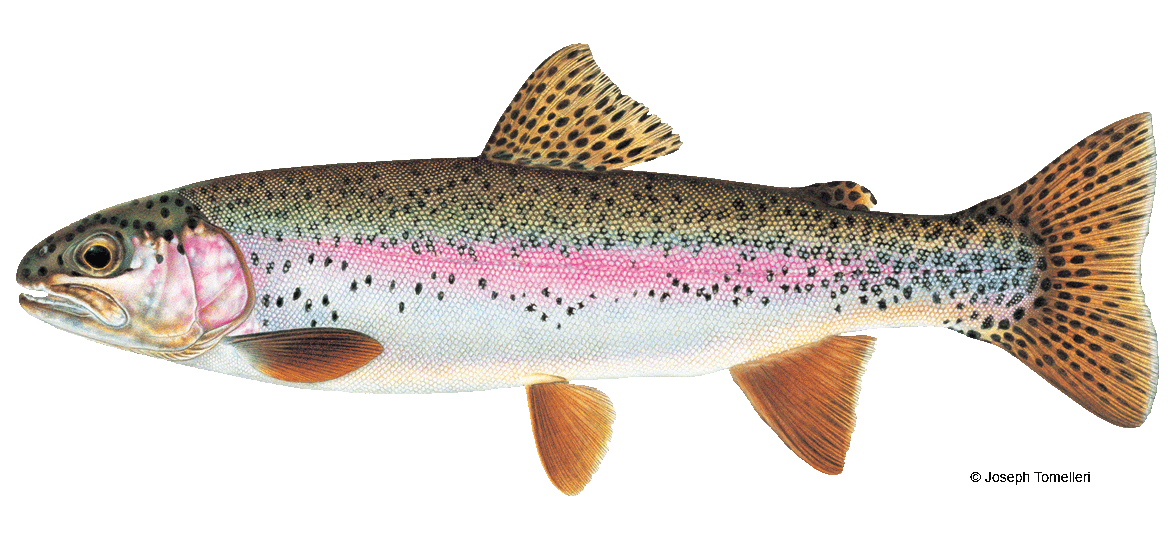
Fun Facts
- Species Name: Oncorhynchus mykiss
- Common Names: steelhead, rainbow, coastal rainbow, 'bow, Kamloops trout, silver trout
- State Record: 13 lbs. 12 oz. Caught in Lake Dunmore in 2006 by Harry Hunt.
Description
Native to North American west coast waters, rainbow trout were introduced in Vermont in the 1800s. Their tail and flanks are heavily spotted with small, well-defined black spots, and their flank usually has a pink or reddish stripe, for which they are named.
While genetically identical, rainbow trout that leave their rivers and streams as juveniles and migrate downstream to the ocean or large lakes -- such as Vermont’s Champlain and Memphremagog -- are deemed “steelhead.” They occupy the deep open pelagic zones and grow to maturity before migrating back to rivers and streams to spawn.
Where to Fish
Rainbow trout inhabit many of Vermont’s clear and cold streams, rivers and lakes, and generally prefer faster water than brook and brown trout.
Notable Vermont rainbow trout fisheries include the Mettawee, Dog, White, Middlebury, Black and Saxton’s rivers, as well as Caspian Lake, Lake Champlain and Lake Memphramagog and their connecting tributary waters.
Additionally, rainbows – both wild and stocked populations – can be found in dozens of other cold, clear waterways throughout the state.
How to Fish
Like other members of the salmonidae family, rainbow trout can be successfully targeted with both live bait and artificial lures. Live bait selections such as earth worms, live minnows and fish eggs can all be effective choices for catching rainbow trout. On the artificial lure side, spinners, minnow plugs, spoons, jigs and various flies are also proven baits.
